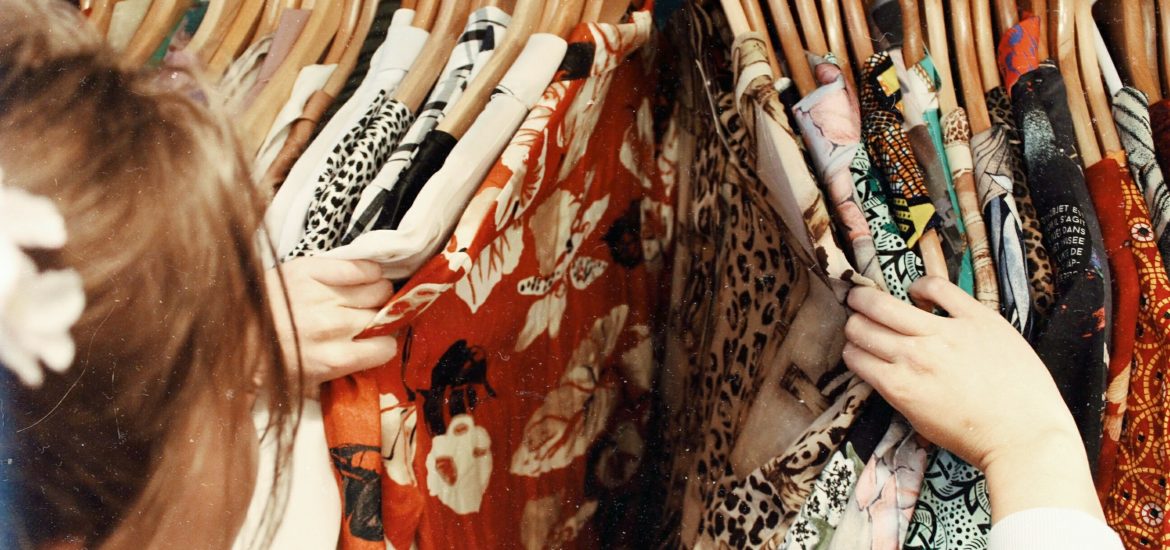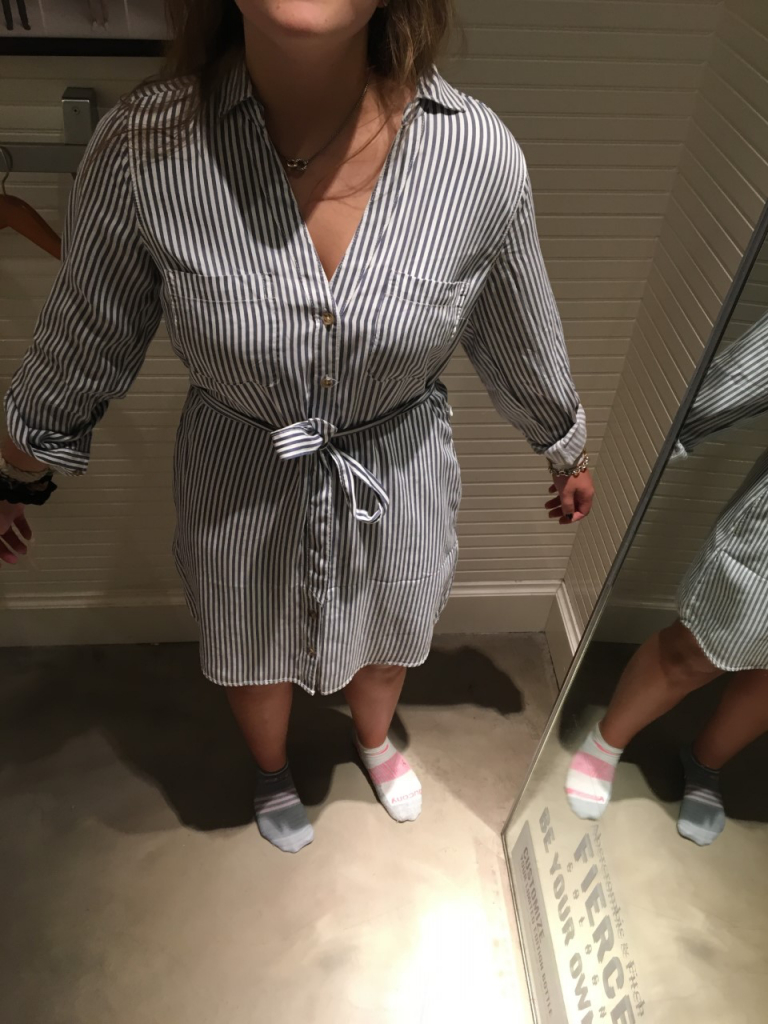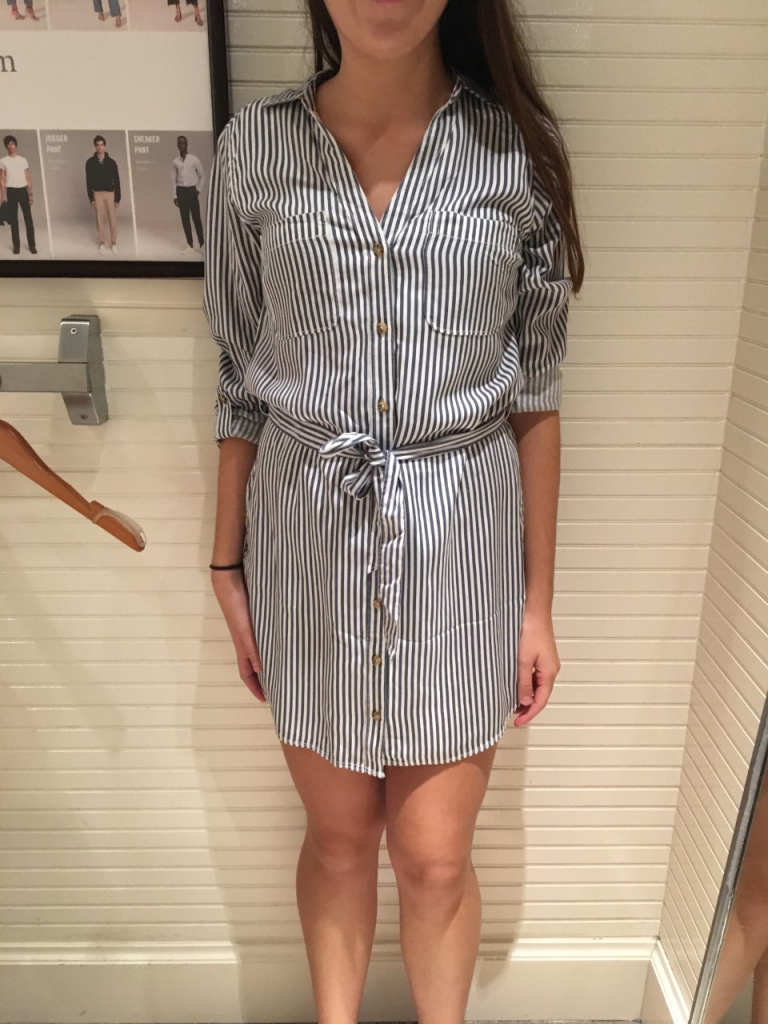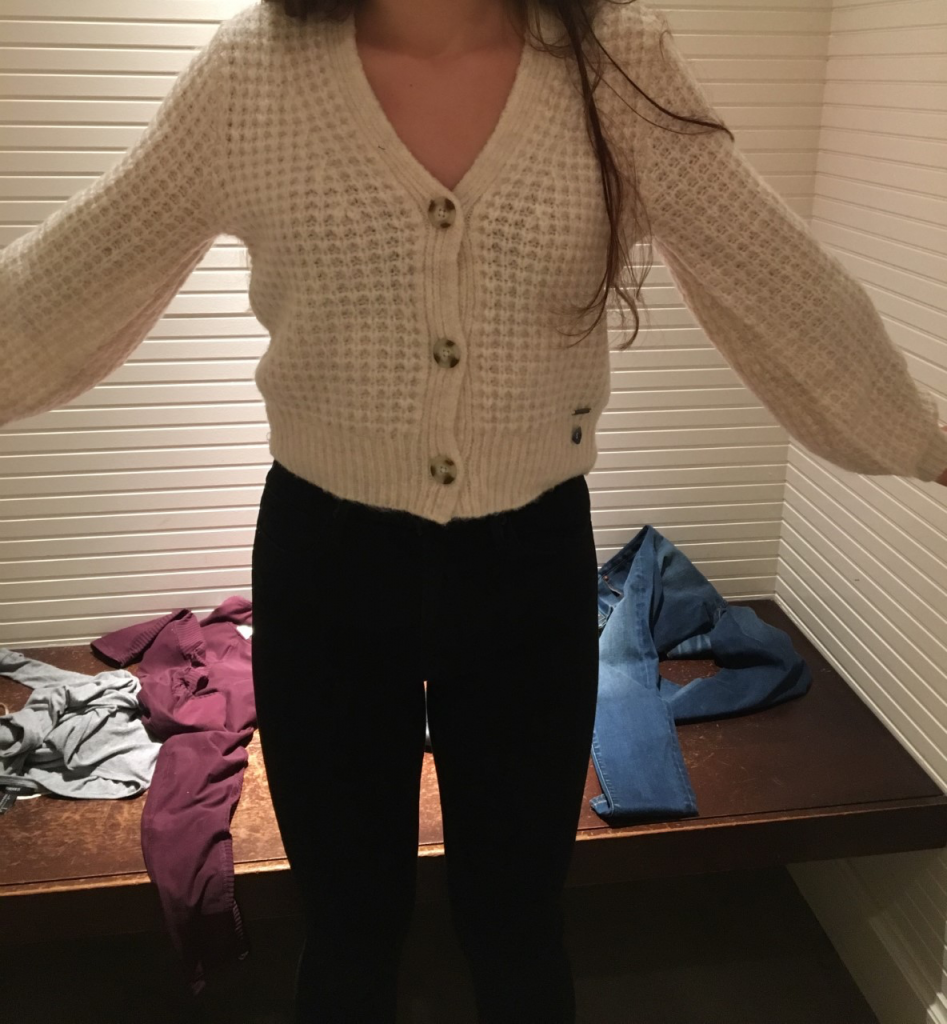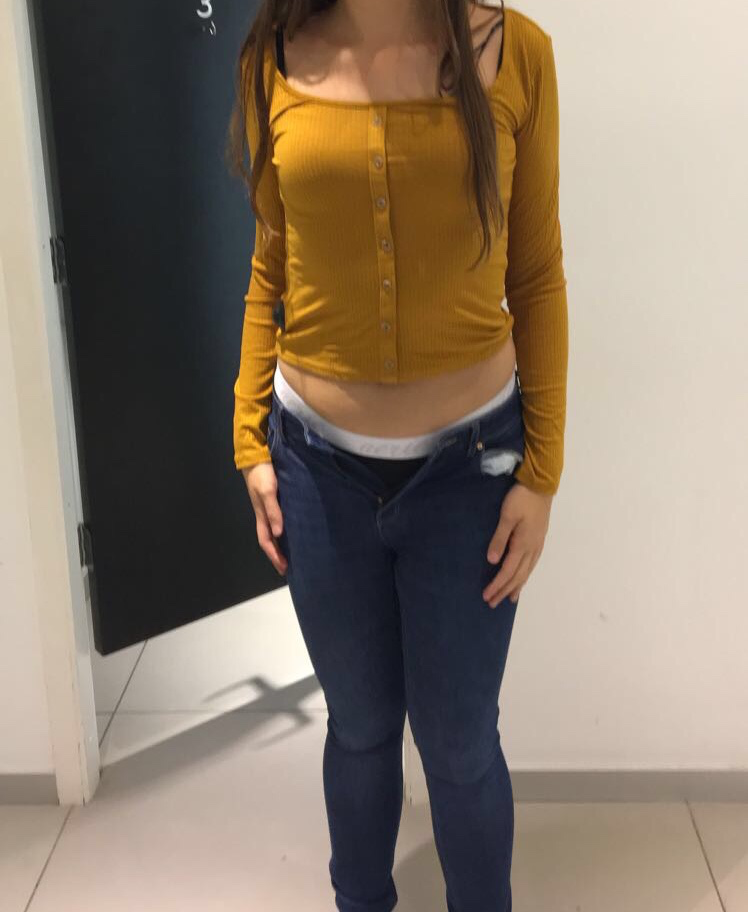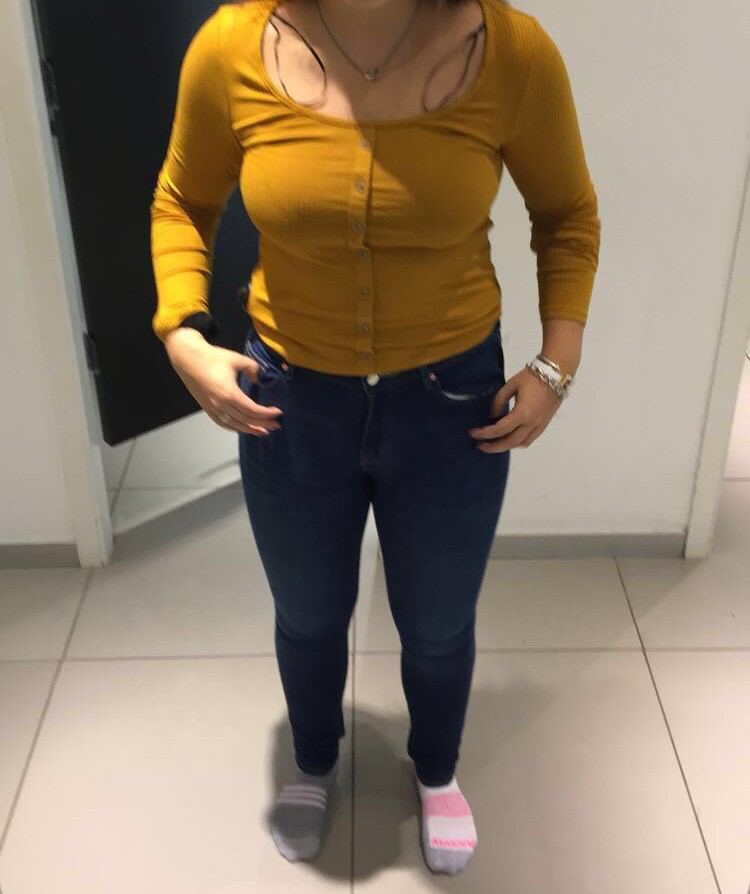Walking into a clothing store only to find that nothing fits you can be the most disappointing feeling in the world. Buying new outfits should be exciting, but unfortunately, the stress of finding something that is both flattering and fits well often outweighs any fun to be had. With the weather growing colder, my best friend, Jolie Smith, and I decided to take a trip to our local mall to find some new fall pieces.
Jolie and I are both a size four, but we have extremely different body types. I am tall at 5’9,” with a rather disproportionate body (legs for days!). Additionally, I am flat-chested, so I often have trouble filling out shirts. Jolie is much more petite, hovering around 5’4” with an average chest size. Since body shapes are vastly different, this ultimately asks the question: Will the same size-four clothing fit us both?
To begin our daunting adventure, Jolie and I went to Abercrombie & Fitch. A&F is always a store I have found to be true to size, but the dress we tried on proved my expectations wrong. (For all of the pictures below, I am on the left and Jolie is on the right.)
Unfortunately, Jolie and I were both very disappointed with this wrap dress. We both tried on a size small, which did not come close to fitting either of us. The dress was way too short on me, which made me feel exceptionally uncomfortable. Jolie experienced the exact opposite problem and was practically swimming in the dress. “It doesn’t flatter my body, and I would have to size down,” she said. The dress made her feel rather frumpy and did nothing to boost her confidence.
Next, Jolie and I decided to try on something that screamed autumn. To our pleasant surprise, the outfits were moderately successful on both of us. The sweater fit Jolie nicely and she said she’d consider buying it. It was a little shorter on me, but I didn’t mind. The jeans were long enough and fit us both well in the waist. If Jolie and I weren’t broke college students, we would have purchased the entire outfit in a heartbeat.
Next, we wanted to go to a store notorious for inconsistent sizing. We headed to H&M, where disaster struck. We still wanted to go for a nice fall look, but H&M failed to deliver. Below is the unfortunate and traumatic outfit we tried on.
This outfit was atrocious. The top technically fit both of us, but it didn’t flatter either of our bodies. The quality was also extremely poor — neither of us would ever consider buying this shirt. The jeans, however, were even more offensive than the top. Usually when jeans don’t fit me, my thighs are not the issue, but these jeans were so tight my legs couldn’t breathe. Even if I had laid down and sucked in my stomach all the way, there was no way these size four jeans would button.
Although I hate to say it, it was kind of disappointing that the pants didn’t fit me. I know body positivity means ignoring store clothing sizes because they’re arbitrary, but not fitting in my usual size definitely made me think that maybe I was gaining weight or that I should start watching what I eat. I know I shouldn’t let sizing have that much of an effect on my self confidence, but it’s so hard to just let it go, which is why focusing on sizing is such a waste of time.
This experiment was extremely eye-opening. I can’t say the results were surprising; it makes sense that the same size clothes would fit Jolie and me differently. That being said, I believe it’s the fashion world’s responsibility to pick up the slack to be more inclusive. As for large retailers, their responsibility is even greater, as they control most of the options on the market.
My main takeaway from this experience is that stores should consider other factors when designing their clothes besides general waist and hip sizes. For tall girls like me, clothes will often fit our waist and hips, but they’re never long enough. I have noticed that stores are beginning to include long and short versions of sizes, which is an improvement, but there is still work to be done.
Size inclusivity would only be advantageous to a brand. It would make their image more body positive and could even increase sales because more people will now be included in their target market. Ultimately, while retailers everywhere are beginning to take note of the importance of size inclusivity, there is always room to grow.
This was originally printed in Equal Time Magazine’s Fall 2019 print issue. Read it here.

